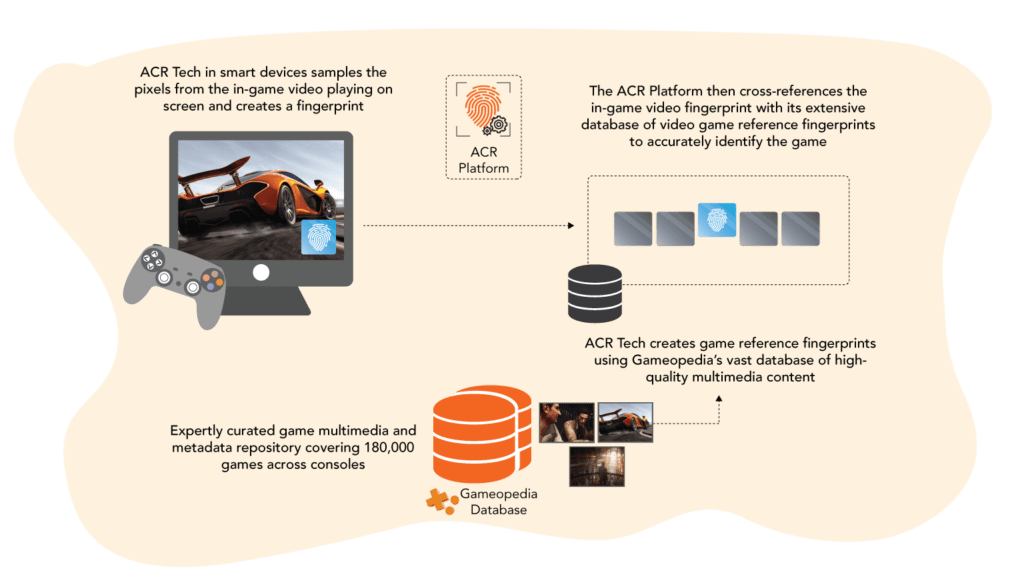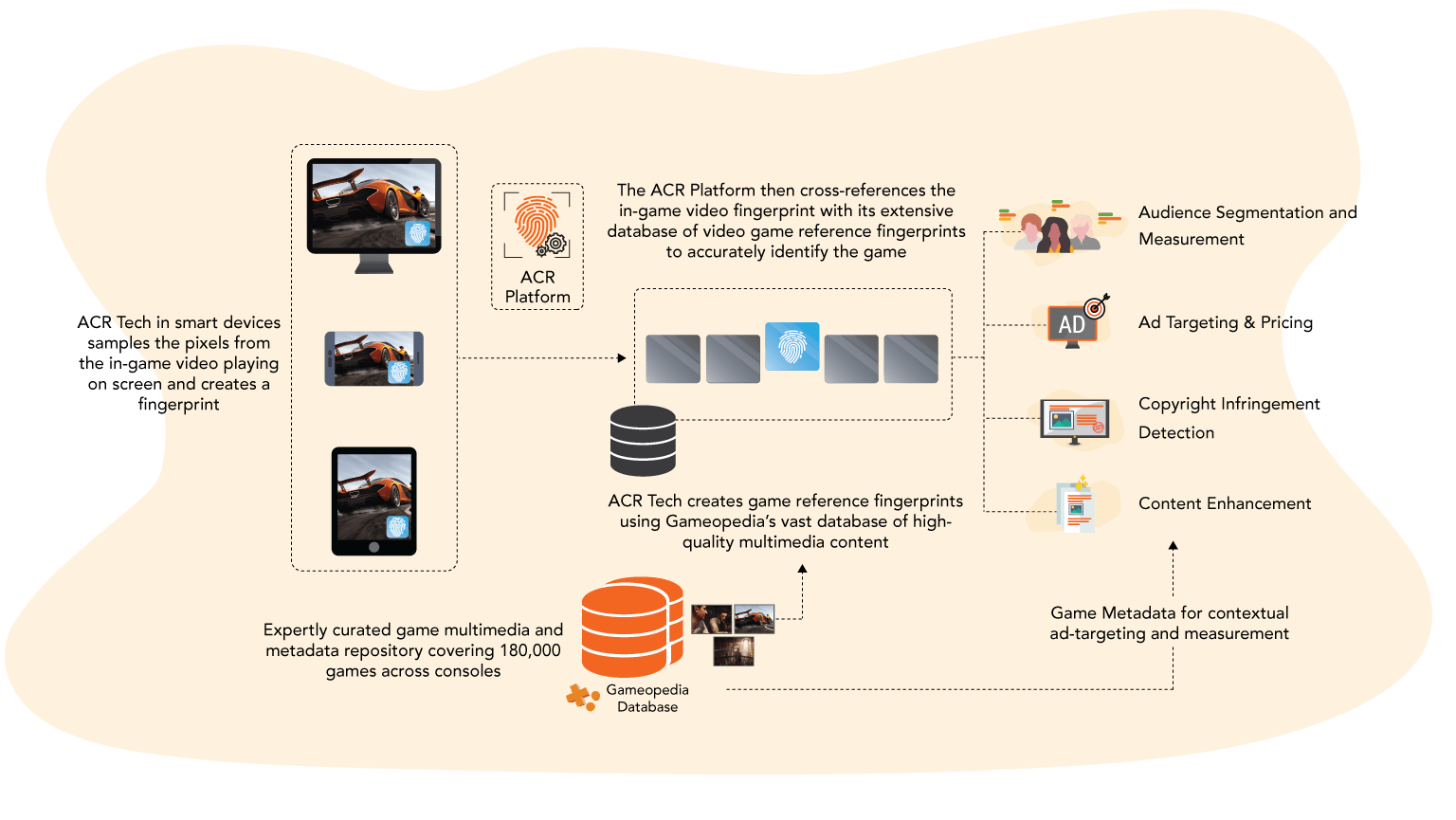Everything You Need To Know About Metadata For Video Games
What is Video Game Metadata?
Metadata describes an item, i.e. it is any information that summarizes basic details about the item, which can make finding and working with particular data easier. For example, the ingredients listed behind a box of cookies is metadata describing the contents of the cookie.
Similarly, video game metadata refers to descriptors about the game that not only give you an overview of the game like the developer’s name, publisher’s name, release date, game description, and so on, but it also helps the people using this video game data easily understand what the game has to offer without having to purchase or play the game themselves.
What Constitutes Video Game Metadata
Video game metadata could be any information that gives the reader insights about the game. From the release date to the game franchise it belongs to, any information that tells us something about the game can be considered game metadata.
Let’s take the example of Borderlands 3 – an action role-playing first-person shooter. The metadata for this game would look something like this.

The information above may appear to be basic but its applications are invaluable to certain sections of the industry.
This leads to our next question:
Who Needs Metadata For Video Games?
Everybody that is a part of the gaming ecosystem, from the retailer to the consumer, uses video game metadata at some level. The format in which the data is presented and how it is used can vary depending on the requirement. Let us explore this in detail.
e-Retailers & App Stores
A retailer’s goal is to engage their customer and attend to their needs or solve a problem they have.
Your first thought might have been retailers want to sell more but it might be more prudent in the long run to gain the trust and loyalty of their existing user base. And gamers are a loyal bunch.
The best way to gain a gamer’s trust? Understand what you are selling inside out.
With detailed and descriptive metadata and good metadata management policies, the store can display the right games to the customer most likely to buy them. What are these “right games”? They are games which have the features that a customer wants, or a game by the same developer whose earlier work the customer enjoyed for example. This is information that the customer needs to make a decision. By offering the right games, the store improves not just the customer’s user experience but also instills a certain sense of loyalty in them. You gain their trust by putting the customer first with recommendations and search results that solve their problem.
Let’s consider the example of Cyberpunk 2077. Even though it was the most anticipated game of 2020, not everybody was looking forward to the game. This segment of your user base would prefer not to be inundated with content and promotional material regarding the game. For these users, “Cyberpunk 2077” is the definition of not being the “right game”.

Combining comprehensive game metadata with user behavior, your game store can display content that actually appeals to the audience, making their experience more personalized and improving conversions. But above all, you put the customer first, building their trust in you and retaining their loyalty.
For more information, have a look at our video game metadata offerings for e-Retailers.
Advertisers
People use the same item for different purposes. These purposes are defined by the users’ requirement. For example, while a gamer could be looking for a mouse suitable for gaming, an office employee will look for a mouse more suited for day-to-day use. Depending on their requirement, the features they are looking for can also change.
This means that to advertise the right product to the right consumer, it is vital to understand the “why” and not just the “what”. That way, you don’t just show the user the item that they were looking for, but you also solve their problem.
Let us look at this through the example of a game. The “Mario Kart” franchise is an incredibly popular series of games, having sold over 150 million copies worldwide. These games are enjoyed across all age-groups, by gamers who have different expectations from their gaming habit.

Some gamers play because they like to win. They like competitive games. There are those who play games purely as a social activity that they indulge in with family or friends. There’s another group of gamers who have a hard day at work, and would like to unwind in the evening, without having to worry about complex plotlines or learn advanced gameplay mechanics.
The beauty of “Mario Kart” is that it has something for all the types of gamers described above, but an advertiser can’t expect to use one campaign to reach out to all three groups. Trying to sell a game in the “Mario Kart” series requires using a different pitch to sell to each of these three kinds of gamers. To do that, they need to understand how to appeal to these target demographics. What keywords do they look out for when making a game purchase? What features do they expect from a game? Do they expect their games to look simple, or photorealistic with complex mechanics?
Hence, the advertisers should not only align with “what” the consumer is looking for but also the “why”. With comprehensive game metadata, ad networks can improve their targeting, making it more personalized while providing context to why the said product is best suited for your needs, and not just the best on the market.
Advertisers can learn more about our data offerings that can benefit their campaigns.
ACR Platforms
With the rise of OTT platforms, we have seen a significant need for Automatic Content Recognition (ACR) – identification technology that utilizes a large database to recognize content (video, audio, or digital images) played on a media device. Using this technology, ACR platforms can not only extract user-specific viewing data like time of viewing, show title, and genre, but also prevent third-parties from pirating online content.
For example, major appliance providers like LG and Samsung do not have a way to track what content is being played on their Smart TVs via gaming consoles, making it difficult for these brands to understand user behavior and interests. Instead, they have to depend on the device manufacturer or third-party providers for this information.
In a world where gaming has become everyone’s new favorite pastime, this information is gold, and paying for this data is not feasible in the long term. This led to manufacturers using ACR to bridge this gap.
ACR platforms utilize thousands of “fingerprinted” content to use as a reference in identifying the viewer’s on-screen content. With comprehensive game metadata, ACR platforms can tag game videos and screenshots with descriptive tags that describe key characteristics or elements that can be used to identify a specific piece of content.
Read more on our data offerings for ACR Platforms.
Why Do You Need Metadata For Video Games?
Improve Search Results and Product Discoverability
In a study carried out by Kotaku, 40% of purchased games are never even played. From this information, it is clear that there are people to play games but they can never find the right one. So, to get the right game to the right individual, it is important to catalog these games properly using specialized video game data and metadata management practices.
With an exhaustive game metadata repository, you get access to descriptive tags and information that provide an in-depth understanding of the gaming product or service you are offering. This allows you to improve product placement and discovery.
For example, if a customer is interested in purchasing a popular RPG game called “The Witcher 3: Wild Hunt”, they would understand from the description that the game is an open world Action RPG with a medieval setting. But if they wanted to understand to what extent the open world and RPG elements are present in the game, they could be presented with additional information by using descriptive tags. For this game, some tags would be, “Open World (Defining)”, “Action (Key Feature)”, and “Role Playing (Defining)”.
From these tags, the customer understands that the game heavily features open world and Role Playing features, while Action elements are strongly present without being the main focus. This additional layer of information can strengthen the customer’s resolve to purchase the game.
Understand and Use Your Data Effectively
The most common problem faced by people working with video game data is that it is not ‘clean’, i.e. it is not organized and easy to understand. This makes working with data difficult and time-consuming.
With comprehensive metadata, people can make sense of the data presented to them quicker. This reduces turn-around times, and improves the quality of insights derived from the data. Conventionally sourced data would require a great deal of fact-checking and cleaning before you’re sure it’s employable. However, using an organized and quality-checked dataset and good metadata management practices, such as the ones provided by Gameopedia, means you can utilize it right away.
Improve Trust in Your Data
Organized game data and information, collected in a standardized manner, means that the data is immediately ready for use and its in-depth nature provides transparency that would have been difficult to achieve otherwise. Gameopedia has a proven track record in delivering standardized metadata consistently, with all the definitions and use cases being agreed upon by a team of gaming experts.
Properly managed video game metadata can help organizations better trust the collected data because they know that the information is curated in an organized manner.
The video game data that we collect can be used for a variety of purposes. How much data you collect and how you use it is at your discretion. Powerful, descriptive metadata and proper metadata management makes the data easier to understand and use irrespective of the volume.
At Gameopedia, we look to provide informative game metadata to every member of the gaming ecosystem in order to empower their efforts and capture the gaming market. Reach out to us to leverage the power of our data that encompasses over 180,000 games spanning 200 platforms.





